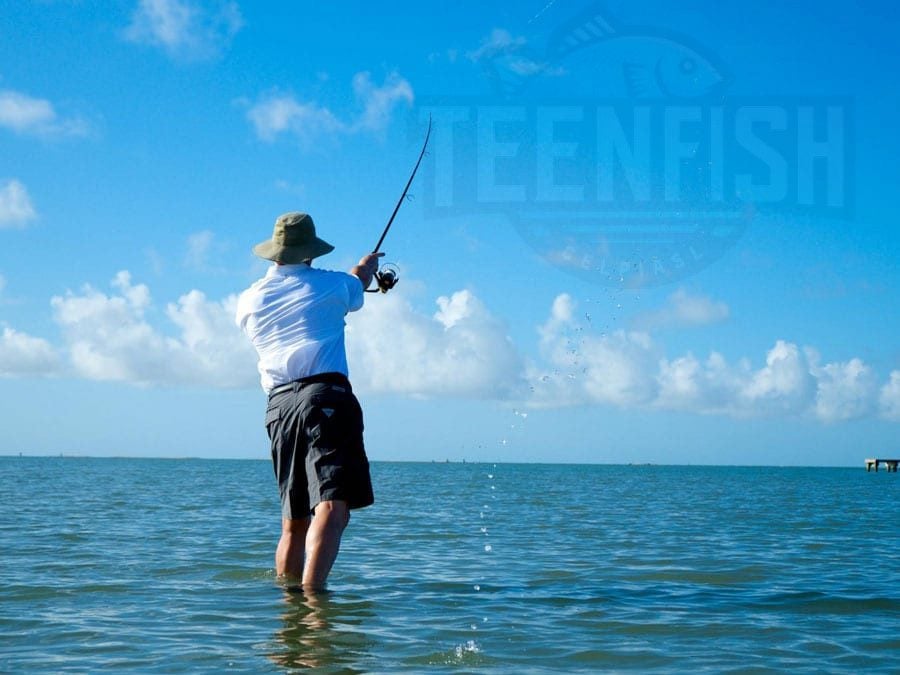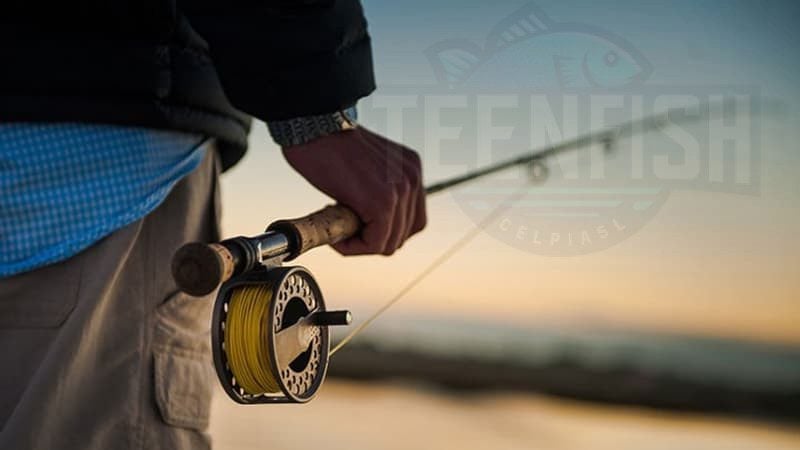Are you ready to embark on an unforgettable fishing journey in the Lone Star State? Whether you’re a lifelong Texan or a visitor seeking new thrills, this beginner’s guide will equip you with the essential knowledge and insider tips to make the most of your angling adventures in 2024. From securing the necessary licenses to selecting the right gear and uncovering the hottest fishing spots, we’ve got you covered. Get ready to reel in memories that will last a lifetime!
Obtaining Your Texas Fishing License
Before you can wet your line in Texas waters, you’ll need to secure a valid fishing license. Here’s a step-by-step guide to ensure you’re fully prepared:
- Visit the official Texas Parks and Wildlife Department (TPWD) website at tpwd.texas.gov and create an account or log in to your existing account.
- Navigate to the “Buy Licenses & Permits” section and select the appropriate license type based on your age, residency status, and any applicable discounts (e.g., senior, veteran, disability).
- Provide the required personal information, such as name, date of birth, physical address, and contact details.
- If applicable, upload any necessary documentation (e.g., proof of residency, disability documentation).
- Review and confirm the license details and make the payment using a credit/debit card or other accepted payment methods.
- Upon successful completion, you’ll receive a digital copy of your license, which can be printed or stored on your mobile device for easy access while fishing.
Pro Tip: Consider purchasing a Super Combo license, which covers fishing, hunting, and other outdoor activities, potentially saving you money in the long run.
License Fees at a Glance
- Resident Annual Fishing License: $30 (valid for one year from the date of purchase)
- Non-Resident Annual Fishing License: $58 (valid for one year from the date of purchase)
- Resident One-Day All-Water Fishing License: $11 (valid for one calendar day)
Additional fees may apply for specific endorsements or stamps, such as:
- Freshwater Fishing Stamp: $5 (required for freshwater fishing)
- Saltwater Fishing Stamp: $10 (required for saltwater fishing)
- Lake Texoma Stamp: $12 (required for fishing on Lake Texoma)
Recommended Fishing Gear
Investing in the right gear can significantly enhance your fishing experience and increase your chances of success. Here are some essential items to consider:
Fishing Rod Selection
- Spinning Rods: Ideal for beginners, spinning rods are easy to use and versatile. Look for rods in the 6-7 foot range with a medium or medium-heavy power rating for targeting common freshwater species like bass, crappie, and catfish.
- Baitcasting Rods: More advanced but offering increased casting distance and accuracy, baitcasting rods are popular for bass fishing. Consider a 6-7 foot rod with a medium-heavy or heavy power rating.
- Fly Rods: For fly fishing enthusiasts, a 9-foot, 5-weight rod is a versatile choice for trout and other freshwater species.
- Saltwater Rods: When fishing in coastal areas, opt for longer rods (7-8 feet) with a medium-heavy or heavy power rating to handle larger saltwater species like redfish and speckled trout.
Line, Hooks, and Weights
- Monofilament Line: A popular choice for beginners, monofilament lines are affordable and offer good knot strength and abrasion resistance. Consider 8-12 lb test for most freshwater applications.
- Braided Line: With increased sensitivity and zero stretch, braided lines are ideal for techniques like crankbait fishing or fishing around heavy cover. Look for 20-30 lb test braided line.
- Hooks: For freshwater fishing, size 6-2 hooks in patterns like circle, offset shank, or wide gap are versatile choices. For saltwater, use larger hooks (size 2/0 – 5/0) with a stronger gauge.
- Weights: Split shot weights (BB to AAA sizes) or egg sinkers (1/4 oz – 1 oz) can help get your bait to the desired depth, depending on water conditions and the species you’re targeting.
Essential Accessories
- Tackle Box or Bag: Invest in a durable tackle box or bag to organize and store your lures, hooks, weights, and other accessories.
- Pliers and Line Clippers: These tools are essential for removing hooks, cutting lines, and handling fish safely.
- Fish Gripper or Lip Gripper: A fish gripper or lip gripper allows you to securely hold and control fish during the catch-and-release process, minimizing harm to the fish.
- Polarized Sunglasses: High-quality polarized sunglasses can help reduce glare on the water, allowing you to spot fish and underwater structures more easily.
- Live Bait Bucket or Aerator: If you plan to use live bait, a bait bucket or aerator can help keep your bait fresh and lively throughout your fishing trip.
- Fishing Net: A sturdy fishing net can assist in safely landing and handling larger fish.
Hot Fishing Spots in Texas
Texas is home to numerous exceptional fishing destinations, each offering unique opportunities and challenges. Here are some popular spots to consider:
River and Lake Hotspots
- Guadalupe River (Trout, Bass)
- GPS Coordinates: 29.8333° N, 98.4833° W
- Best Times: Early spring and fall for trout, summer for bass
- Recommended Techniques: Fly fishing, live bait, and lures for trout; crankbaits, spinnerbaits, and soft plastics for bass
- Caddo Lake (Crappie, Catfish)
- GPS Coordinates: 32.7500° N, 94.1000° W
- Best Times: Early spring and fall for crappie, summer for catfish
- Recommended Techniques: Minnows or jigs for crappie, cut bait or prepared baits for catfish
- Lake Fork (Bass, Crappie)
- GPS Coordinates: 32.7833° N, 95.4500° W
- Best Times: Spring and fall for bass, winter for crappie
- Recommended Techniques: Crankbaits, jigs, and soft plastics for bass; minnows or jigs for crappie
- Choke Canyon Reservoir (Bass, Catfish)
- GPS Coordinates: 28.4833° N, 98.2000° W
- Best Times: Spring and fall for bass, summer for catfish
- Recommended Techniques: Crankbaits, spinnerbaits, and soft plastics for bass; cut bait or prepared baits for catfish
Coastal Fishing Destinations
- Galveston Bay (Redfish, Speckled Trout)
- GPS Coordinates: 29.3000° N, 94.8000° W
- Best Times: Spring and fall for redfish, summer for speckled trout
- Recommended Techniques: Live bait (shrimp, mullet) or artificial lures like spoons and soft plastics
- Corpus Christi (Snook, Tarpon)
- GPS Coordinates: 27.8000° N, 97.4000° W
- Best Times: Summer and early fall for snook and tarpon
- Recommended Techniques: Live bait (mullet, pinfish) or large topwater lures and swimbaits
- South Padre Island (Redfish, Snook)
- GPS Coordinates: 26.0667° N, 97.1667° W
- Best Times: Spring and fall for redfish, summer for snook
- Recommended Techniques: Live bait (shrimp, mullet) or artificial lures like spoons and soft plastics
Diverse Fish Species
While bass and catfish are among the most sought-after freshwater species in Texas, the state’s waters are also home to a variety of other game fish, including:
- Crappie: Found in many lakes and reservoirs, crappie can be targeted with small jigs, minnows, or crankbaits.
- Sunfish (Bluegill, Redear): These panfish species are abundant and can be caught using live bait like worms or small lures.
- Trout: Stocked in select rivers and lakes, trout can be caught using fly fishing techniques, live bait, or small spinners and spoons.
Along the coast, anglers can target a diverse array of saltwater species, including:
- Redfish (Red Drum): A popular inshore target, redfish can be caught using live bait or artificial lures like spoons and soft plastics.
- Speckled Trout: Another inshore favorite, speckled trout can be caught using live bait or artificial lures like topwater plugs and soft plastics.
- Snook: A prized catch along the Gulf Coast, snook can be targeted with live bait or large artificial lures like swimbaits and topwater plugs.
- Tarpon: Known for their acrobatic leaps, tarpon are a bucket-list species for many anglers and can be caught using live bait or large artificial lures.
Fishing Tips and Techniques
To increase your chances of success and make the most of your fishing adventures, consider these helpful tips and techniques:
Species-Specific Tactics
- Bass Fishing:
- Topwater Lures: Buzzbaits, frogs, and poppers can be effective for triggering explosive surface strikes, especially in low-light conditions or around cover.
- Crankbaits: Lipless crankbaits and square-billed crankbaits are versatile choices for targeting bass in various depths and cover types.
- Soft Plastics: Texas-rigged worms, creature baits, and stick baits can be worked slowly around structure and vegetation to entice bites.
- Catfish Fishing:
- Cut Bait: Fresh or preserved cut bait like shad, shrimp, or chicken liver can be effective for attracting catfish.
- Prepared Baits: Commercial baits like stinkbait, blood bait, or dip bait can be irresistible to catfish, especially in heavily fished areas.
- Live Bait: Lively baits like nightcrawlers, minnows, or shrimp can also be productive for catfish.
- Trout Fishing:
- Fly Fishing: Dry flies, nymphs, and streamers can be effective for trout, depending on the water conditions and time of year.
- Spinners and Spoons: Small inline spinners and spoons like Roostertails or Panther Martins can be productive for trout in rivers and streams.
- Live Bait: Worms, minnows, or PowerBait can be effective live bait options for trout.
Spot Selection Strategies
- Structure: Look for areas with submerged logs, stumps, rock piles, drop-offs, or weed beds, as these can attract and hold fish.
- Current Breaks: Areas where the current slows or changes direction can create eddies and pockets where fish can rest and ambush prey.
- Points and Channels: Underwater points and channels can funnel baitfish and create prime ambush spots for predatory fish.
- Water Temperature and Clarity: Pay attention to water temperature and clarity, as these factors can influence fish behavior and feeding patterns.
- Seasonal Patterns: Fish often move to different areas or depths depending on the season, so adjust your spot selection accordingly.
Proper Fish Handling and Storage
- Handling Fish:
- Use a fish gripper or lip gripper to securely hold the fish, avoiding the gills and eyes.
- Support the fish’s body with a wet towel or your other hand to minimize stress and injury.
- Avoid removing the protective slime coating on the fish’s body.
- If practicing catch-and-release, minimize the time the fish is out of the water and handle it as little as possible.
- Storing Fish:
- If you plan to keep your catch, place the fish in a cooler with ice or a live well to keep it fresh.
- Bleed the fish immediately after catching by cutting the gills or making a deep incision near the tail to improve meat quality.
- Pack the fish in ice or ice packs, ensuring the cavity is well-iced to prevent spoilage.
- Transport the fish to your cleaning station or home as soon as possible for proper cleaning and storage.
With this comprehensive guide, you’re now equipped with the knowledge and tools to embark on an unforgettable fishing adventure in Texas. Grab your gear, secure your license, and get ready to create lasting memories on the water!


